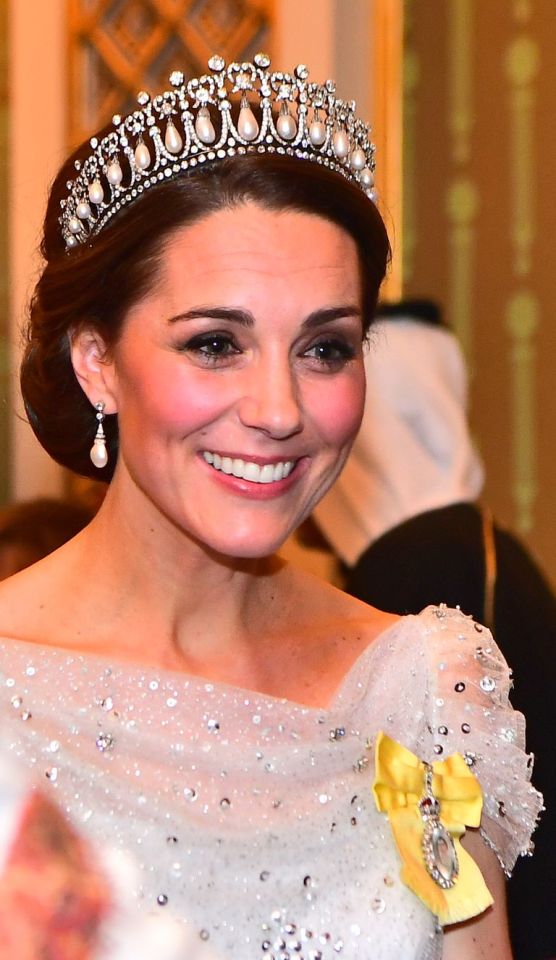King Charles III and Queen Camilla have unveiled their Coronation State Portraits at the National Gallery in London on May 6th, the second Anniversary of their Coronation at Westminster Abbey. The Portraits will be on display for a month before moving to their permanent home in the Throne Room at Buckingham Palace.



The portraits, which will form part of the Royal Collection, were painted by two different artists personally selected by Their Majesties. His Majesty chose to be painted by Peter Kuhfeld and Queen Camilla selected Paul S. Benney. Both artists are known to The King and Queen already, having previously contributed to other royal commissions.

These portraits will join an important tradition of Coronation State Portraits dating back many centuries. The new portraits will be on display in the Central Room at the National Gallery, of which The King is Royal Patron, from Tuesday 6th May until Thursday 5th June before moving to their permanent home in the Throne Room at Buckingham Palace. They can be seen there as part of a visit during the Summer Opening of the State Rooms.

The recently completed portraits were commissioned by The King and Queen shortly after The Coronation, with Their Majesties undertaking a number of sittings in the following months.


Peter Kuhfeld has worked with His Majesty for many years, having been commissioned by him to paint Princes William and Harry as young children. He has also accompanied him on many of his foreign tours as the official Tour Artist.

The King undertook two of his five sittings in the State Apartments of St. James’s Palace, with its Throne Room being used for the backdrop of the portrait. Other sittings took place at Windsor Castle.

Following established convention, the portrait of King includes the Imperial State Crown, placed on a table to one side. His Majesty wears his Robe of State, worn to enter the Abbey and for the first part of The Coronation service. His Majesty also wears naval uniform (Number 1 Ceremonial Day Dress) with medals and decorations.

The Queen’s portrait includes Queen Camilla’s Crown (formally known as Queen Mary’s Crown), originally created for the coronation of Queen Mary in 1911. The Queen is shown with her Robe of Estate. This was worn during the latter part of The Coronation ceremony, as The King and Queen departed Westminster Abbey.

The Queen wears her Coronation Dress, which was designed by Bruce Oldfield. Made of ivory coloured silk, it features silver and gold embroidered floral designs, representing Their Majesties’ affection for nature.
All six of The Queen’s sittings took place in the Garden Room at Clarence House. Artist Paul Benny has said of the commission:
My guiding principles in this commission were to both acknowledge the grand and historic nature of The Coronation iconography with all the equipage of the Monarchy and at the same time reveal the humanity and empathy of such an extraordinary person taking on an extraordinary role.



King Charles III and Queen Camilla were crowned by the Archbishop of Canterbury in a spectacular Ceremony at Westminster Abbey in 2023, followed by a Procession and an appearance on the Balcony of Buckingham Palace.

The earliest example of a State Portrait in the Royal Collection depicts James VI and I in coronation robes and dates from around 1620. It hangs at Windsor Castle. Also at Windsor is the most recent example prior to the completion of these two new portraits – a portrait of the young Queen Elizabeth II, painted by Sir Herbert James Gunn to commemorate her coronation in 1953.
These two new portraits will join an important and impressive tradition of historic state portraiture, dating back many centuries. Historically, these grand full-length portraits became the definitive image of the new monarch, portraying them in an imposing setting, dressed in robes. Numerous copies would be made and widely distributed to courtiers, ambassadors and embassies around the world.

The earliest example in the Royal Collection depicts James VI and I (1566 – 1625) in coronation robes. Commissioned by the sitter, it was painted by the Flemish artist, Paul van Somer. Prior to the completion of these two new portraits the most recent twentieth-century example is Sir Herbert James Gunn’s radiant portrait of the young Queen Elizabeth II (1926 -2022).

The portraits usually followed a set of conventions, the idea being to present the monarch accompanied with the symbols of rule – a crown, orb and sceptre. This pattern was set by the earliest portraits. The monarch is often depicted standing on a step, in their coronation robes – the purple Robe of Estate or crimson Parliamentary Robe. Monarchs have not always chosen to be immortalized wearing the clothing worn at their coronation. Both King Edward VII (1841 – 1910) and King George V (1865 – 1936) chose instead to be depicted in military uniforms for their portraits.

Girls of Great Britain and Ireland Tiara
Queen Alexandra’s Kokoshnik Tiara
Burmese Ruby Tiara
The Belgian Sapphire Tiara
Greville Tiara
Delhi Durbar Tiara
Cubitt-Shand Tiara
Queen’s Five Aquamarine Tiara
George IV State Diadem
Queen Mary’s Crown
Queen Mary’s Lover’s Knot Tiara
The Cartier Halo Tiara
The Lotus Flower Tiara
Strathmore Rose Tiara
King George VI Festoon Necklace










